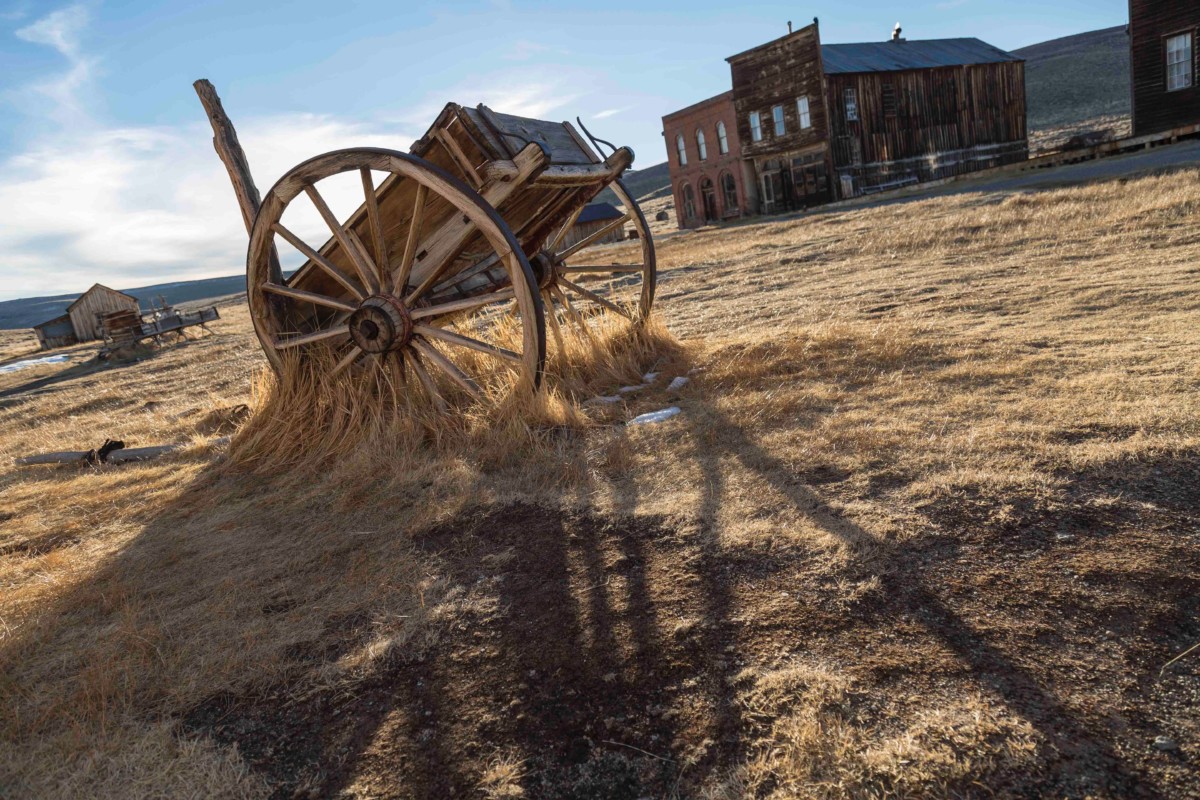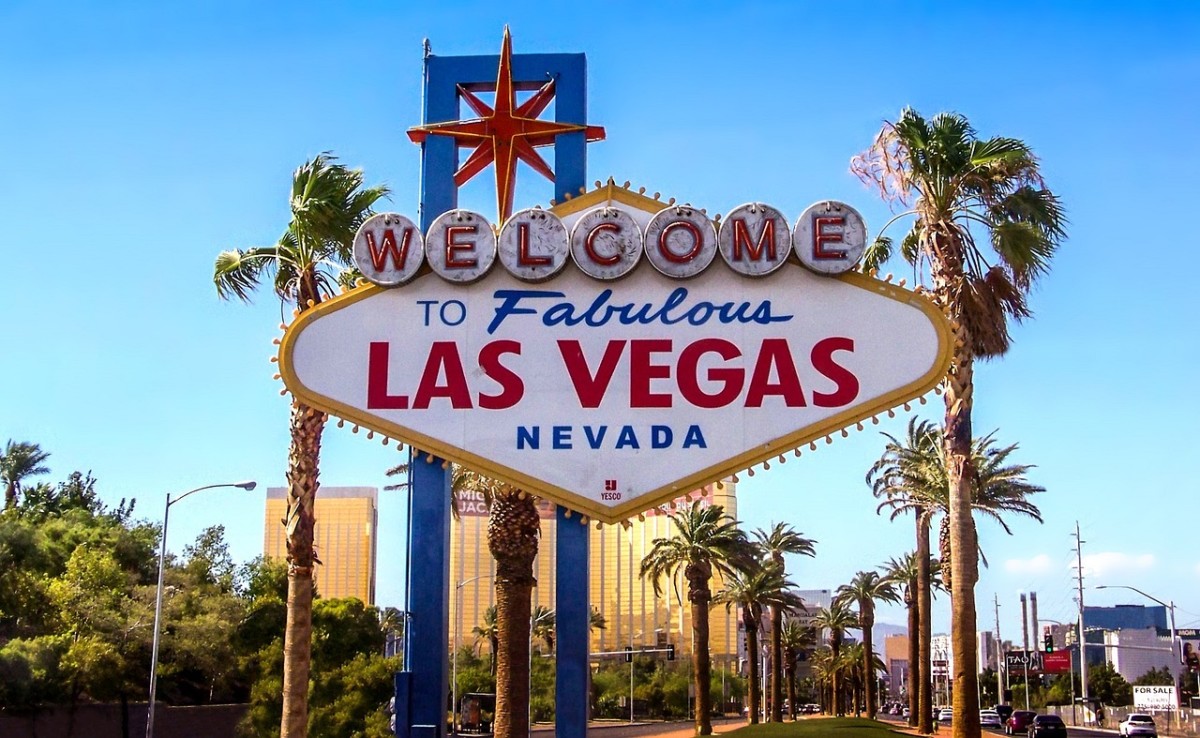Las Vegas has a reputation larger than its population of 644,000 people. People from all over the world flock to Vegas for gambling, big-time fights, and recently, sports franchises. It seems odd that the entertainment capital of the world should be at home in the midst of a desert. But that is what has happened in Las Vegas. Las Vegas’s history is as colorful as the lights which illuminate its nights. There are interesting questions regarding why Las Vegas is the way that it is today. Why should there be a thriving metropolis in the desert? How did gambling get so big in Las Vegas? What role did organized crime have to play in Las Vegas’ rise to prominence? We will talk about all these and more in this history of Las Vegas.

Pre-1905
Photo by Sebastian Voortman from Pexels
Situated within the Las Vegas Valley, Las Vagas is an oasis of sorts within the Mojave desert.
As with most of North America, our story begins with the Native Americans. There is evidence of human activity in the area as far back as 10,000 years ago. The Paiute nation was the group to call the area now known as Las Vegas home. They moved into the valley around 700 AD, migrating throughout the year, spending the summer months in the mountains and the rest of the year in the valley.
A Spanish trader commissioned to establish a trade route from Utah to las angels by the name of Antonio Armijo. On Christmas Day1892, Antonio Armijo found himself camped about 100 miles northeast of modern-day Las Vegas. Armijo sent out a scouting party to the west of the camp to look for the best way forward. One scout, Rafael Rivera, set out alone from the scouting party and became the first non-Native American to set foot in the Las Vegas Valley. He rejoined the rest of the party and led them to the valley. This area was full of springs and greenery, Armijo and his men named the valley “Las Vegas,” which means “The Meadow” in Spanish. Las Vegas became a stopping point on the trail from Salt Lake City to Los Angeles.
In 1844, President John Tyler sent John C. Fremont on an expedition through the area to establish a fort at Las Vegas Springs in case of war with Mexico, which by now controlled the area. The Mexican-American war broke out in 1846. At its conclusion in 1848, the United States took over large sections of the American Southwest, including the Las Vegas area.
In 1855, William Bringhurst came to the area with a group of Mormons from Salt Lake City. They built a small adobe fort and began planting crops and mining for lead in the mountain. However, within three years, Due to harsh conditions, and trouble with the Native Americans, they abandoned the fort and went back to Utah.
During the American Civil War, Nevada became an official state. After the Civil War, the government of the United States sent Octavius Gass to reestablish the previously abandoned fort. By 1890, The Railroad Looking for a Stop with water to drive the locomotives steam engine’s, They determine that the las Vegas Valley would make a great stop on the route west. In 1905, the railroad officially made it to Las Vegas.
The City of Las Vegas: The Early Years
This video was provided by KCLV Chanel 2 Learn more here
1905-1929
In 1905 110 acres of land were then purchased by the railroad in the Las Vegas Valley. Now a stop on the San Pedro, Los Angeles, and Salt Lake Railway, These 110 acres later became much of the downtown area. The railroad brought freight and people through Las Vegas. The rapid population growth can measure the impact of the railroad. In 1900, the population was 22. By 1920, it had grown to 2,300. Ten years later, the community was over 5,000.
The state of Nevada outlawed gambling in 1910. It was the last state in the western United States to do so. This forced gambling activity underground. The loosely upheld law laid the groundwork for future organized crime activity in Las Vegas. Officially On June 1, 1911, Las Vegas was incorporated. One hundred sixty-eight voted in favor of incorporation, and fifty-seven voted against it. The historic Westside School opened in 1922. It is the oldest school still standing in Las Vegas today. That same year, nationwide, a railroad maintenance worker strike brought on by deflation and wage reductions. There was strong local support for the strikers in Las Vegas. Rail officials rumored that the company was going to move machine shops out of Las Vegas as a result. The rumors quickly broke the strike, and life returned to normal.
Photo by Suzy Hazelwood from Pexels

1930-1940
Despite the beginning of the Great Depression in 1929, Las Vegas remained steady economically. Mostly due to the jobs brought by the railroad company. Nevada legalized gambling in 1931. Despite the legalization, organized crime had a corner on the gambling market due to running gambling operations underground. Another factor that kept the economy healthy was the beginning of construction on the Boulder Dam in 1931. This famous dam became known later as the Hoover Dam. The massive project brought thousands of workers to the Las Vegas area. Over 5000 people worked on the dam construction project. Six Companies Inc. won the government contract. They completed the dam by 1936, two years ahead of schedule. One hundred twelve people died during the construction of the dam. J. G. Tierney was the first official death while working on the project. His son Patrick Tierney was the last official death of the project.
The Hoover Dam – Megastructures – Full National Geographic Documentary
Casinos and showgirl establishments thrived while serving the workers. Legalized gambling and the dam construction were two significant causes of growth for Las Vegas in the 1930s. Mafia members and local people in business were instrumental in creating the gambling and showgirl culture of Las Vegas from the 1930s onward. Fremont Street became home to several casinos at this time. The government worked to keep dam workers out of Las Vegas. Still, the workers found ways to smuggle themselves into Las Vegas to visit the casinos and showgirls.
1941-1965
During World War II, Nellis Air Force Base became an essential base. Many fighter pilots trained at Nellis. Following the war, In 1941, Nellis was built. Many soldiers who had trained at Nellis moved back to the Las Vegas area. After the war, the Nevada Test Site was used to test nuclear bombs. By 1963, Over 100 atomic bombs had been detonated for testing at the site. Opportunistic postcard salesmen named Las Vegas the “Up and Atom City.”
In 1941, El Rancho Vegas Resort opened just outside the city limits. It was the first of several iconic hotel-casinos built along a section of U. S. Highway 91, which became known as The-Strip. A mobster named Bugsy Siegel thought that these hotel-casinos were big business. He opened the Flamingo, a high class, fancy establishment full of glitz and glam. He was backed by mob money from Mexican drug trafficking. The Flamingo brought in high-level performers, and many celebrities attended its grand opening on New Year’s Eve, 1946. Siegel only enjoyed the Flamingo for a short time, as he was murdered in 1947 while sitting in the living room of his girlfriend’s home in Beverly Hills, California. Bugsy killing was rumored to be because he was stealing money from the casino; these rumors are of unknown veracity. Meyer Lanskey, the head of the mob that funded Siegel, took over operations and placed new managers over the Flamingo. Throughout the 1940s and 1950s, mobsters took their cue from Siegel and built more hotel-casinos. Money poured into Las Vegas to fund these grand hotel-casinos. Banks, unions, universities, and even the Church of Latter-Day Saints (the Mormon church) invested in these hotel-casinos. Of course, the mobs also contributed cash to these ventures. Mobsters supplied the capital, and the structure was provided businessmen by to multiply the investments, It was a match made in heaven.
All of this organized crime did not go unnoticed. In 1950, United States Senator Estes Kefauver of Tennessee came to Las Vegas to hold a hearing about mob activity. This hearing put a spotlight on organized crime in Las Vegas but did little to stop it. More mob casinos were created in the 1950s, with connections to Moe Dalitz and Jimmy Hoffa. When President John F. Kennedy was elected in 1960, his brother, Attorney General Robert Kennedy tried to get rid of organized crime, specifically in Las Vegas. He rightly assumed that the mob thrived on casino revenue. He wanted to organize raids of the casinos on the strip but was persuaded to back off by Nevada Governor Grant Sawyer.
Las Vegas gained a reputation as a tourist destination, and 8 million visitors came in 1954. Performers such as Elvis Presley and Frank Sinatra took the stage in Las Vegas, bringing in more visitors. The hotels even gave visitors spectacular views of the mushroom clouds from the nearby Nevada Test Site.
1965-1999
A new era dawned in 1966 when Howard Hughes, a billionaire, went on a small shopping spree of 300 million dollars and bought several casinos that were mob influenced. Paving the way for legitimate businesses to get into the casino game, loosening the hold of organized crime on the casinos. Nevada passed a law in 1969, making it easier for corporations to own casinos. In 1970, the United States Congress passed the Racketeer Influenced and Corrupt Organizations Act (RICO Act), which empowered the Justice Department to fight organized crime better. The mob wouldn’t take it sitting down. The Chicago mob sent Anthony Spilotro to Las Vegas in 1971 to run mob operations. For ten years, he ran his operations in Las Vegas, moving to new locations as needed. But starting in 1981, federal investigators began turning up the heat on him. His actions began to shut down one by one. In 1986, he and his brother were found dead, ordered murdered by the mob. Organized crime was down to its lowest level since the early days of Las Vegas.
Through the 1980s and 1990s, Las Vegas continued to grow, including almost doubling in size in ten years from 1985 to 1995. New and bigger casinos continued to open, including the Mirage, the first mega-resort in Las Vegas in 1989.
In 1995, the Fremont Street Experience opened. The Experience contains a gigantic video screen, millions of LED lights, and a truly massive sound system. It allows pedestrians to walk to ten nearby casinos, over sixty restaurants. An estimated 17 million people visit the Fremont Street Experience each year.
Las Vegas Today
In 2008, over 40 million people visited Las Vegas despite the recession happening in the country. Today, Las Vegas is home to the Golden Knights, a National Hockey League team. It will soon be the home of the former Oakland Raiders. In 2012, the National Museum of Organized Crime and Law opened in the building where the United States Senator Estes Kefauver in which held the organized crime hearings over sixty years earlier. Las Vegas continues to grow and develop and is home to a rich, fascinating history, casinos, and many people. It has come a long way from its early old west days.

